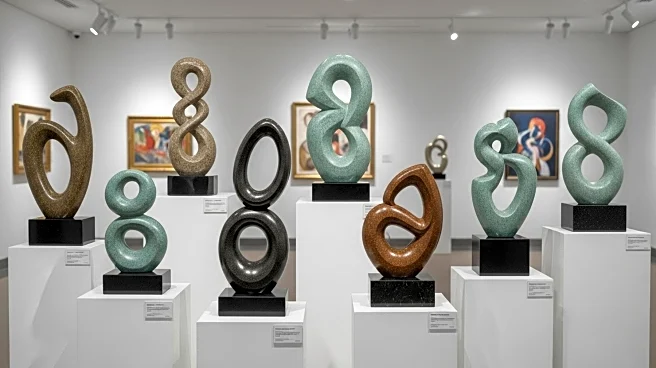What is the story about?
What's Happening?
Christie's has emerged as the leading auction house in the first half of 2025, generating nearly $1.5 billion in fine-art sales, despite a slight decline of 1.9% from the previous year. The auction house achieved a notable sale with Piet Mondrian's 1922 artwork fetching $47.6 million. Sotheby's reported $1.2 billion in sales, marking a 14% decline, but an improvement from the previous year's drop. Phillips experienced the largest decrease, with sales down by 24.5%. These figures reflect total revenue and do not account for private sales or profit margins.
Why It's Important?
The performance of major auction houses like Christie's, Sotheby's, and Phillips provides insights into the current state of the art market. Christie's ability to maintain strong sales figures, despite a slight decline, indicates resilience and effective market strategies. The art market's performance can influence investor confidence and impact related industries, such as art insurance and logistics. The decline in sales at Sotheby's and Phillips highlights challenges in the market, possibly prompting strategic adjustments. Understanding these trends is crucial for stakeholders, including collectors, investors, and art professionals, as they navigate the evolving market landscape.
Beyond the Headlines
The auction market's performance may also reflect broader economic conditions, such as consumer confidence and discretionary spending. The art market often serves as a barometer for wealth distribution and economic health, with high-value sales indicating robust demand among affluent buyers. Additionally, the market's reliance on high-profile sales and private transactions underscores the importance of transparency and ethical considerations in auction practices. As the market evolves, auction houses may need to adapt to changing consumer preferences and technological advancements to remain competitive.
AI Generated Content
Do you find this article useful?













